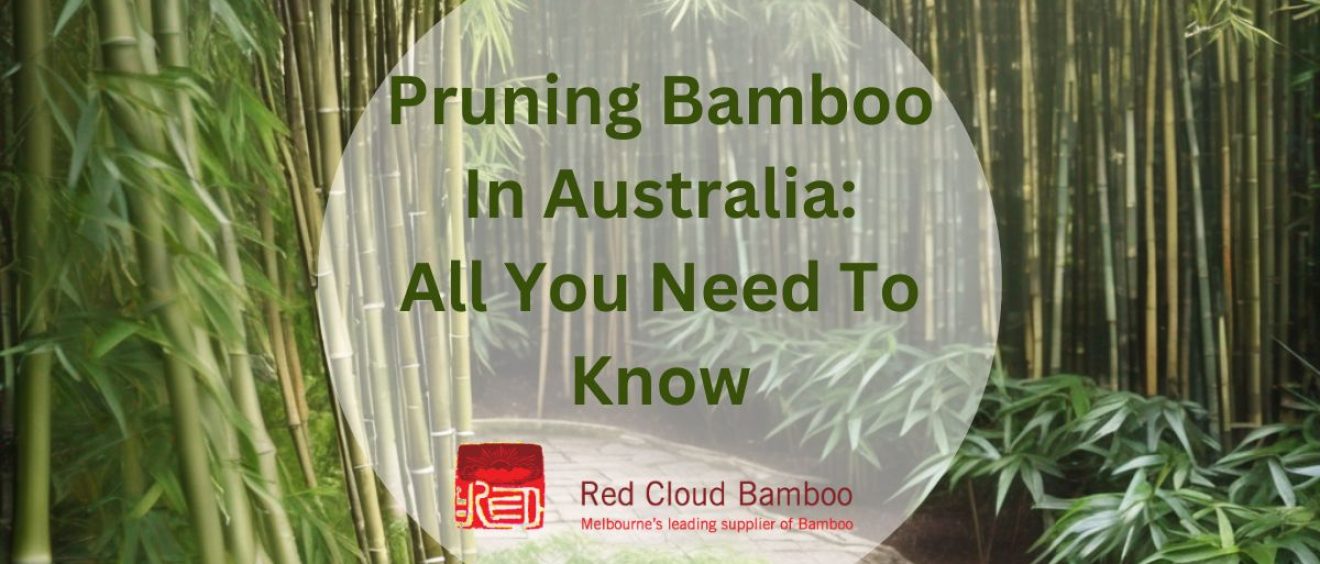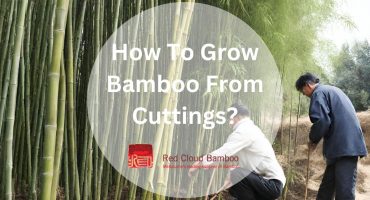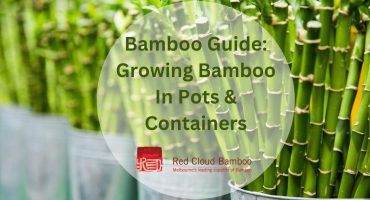
Pruning Bamboo In Australia
Bamboo is a versatile plant that thrives in gardens across Australia. As owners of Red Cloud Bamboo, we supply a variety of bamboo plants and offer guidance on their proper care and maintenance. Pruning bamboo is an essential part of keeping plants healthy and encouraging new growth.
This article will explore why, when, and how to prune bamboo plants throughout the year. Following these pruning bamboo practices will keep your bamboo lush and attractive all season long.
Why Prune Bamboo Plants?
There are several important reasons for pruning bamboo plants on a regular basis.
Pruning encourages new cane growth and prevents plants from becoming overcrowded. It keeps clumping, non invasive bamboo varieties vigorously growing while replenishing old plant material with fresh stems. This ensures the bamboo remains contained instead of becoming invasive through underground runners.
Pruning also helps maintain an attractive shape while removing diseased or damaged growth. Signs of diseases like bamboo canker or rot are easy to spot on new growth, making regular pruning a key disease prevention practice. Addressing these issues keeps bamboo looking its best throughout the growing season.
When To Prune Bamboo?
The ideal times to prune bamboo in Australia gardens falls during late winter and early spring.
Pruning bamboo in August or September after new cane emergence allows plants time to establish before warmer weather arrives. This is generally the least stressful period for pruning bamboo plants.
Avoid pruning during hot months when plants are actively growing, as it can invite insect and disease problems. Also avoid pruning during flower or seed set in late spring or early summer, as cutting pruning bamboo at this time can disrupt the flowering and propagation cycle.
Sticking to a late winter or early spring pruning schedule is the best approach for healthy bamboo in Australia.
How To Prune Bamboo
Select pruning tools:
Use clean, sharp bypass pruning shears or a pruning saw when pruning larger bamboo stalks. Dull tools can crush and damage stalks.
Inspect plants:
Examine bamboo plants and remove any damaged, diseased or crossing stalks at their base near ground level.
Thin older canes:
Prune back some of the older canes that have gone out of their prime growth phase by about one-third each year. This encourages thicker new growth.
Control height and spread:
For clumping bamboos, prune the stems back to a node or bud to maintain the desired height or contain prolific spreaders.
Clean tools:
Sanitise pruning tools with bleach or rubbing alcohol between cutting different bamboo plants to avoid spreading disease.
Conclusion
Following these basic pruning bamboo practices will keep your bamboo plants healthy, attractive and productive all year round.
Don’t be afraid to prune back plants to encourage thick, new cane growth. And remember to prune damaged stalks during late winter for the least impact on the plant.
If you have any other questions about pruning or caring for bamboo, feel free to contact the experts at Red Cloud Bamboo. We’d be happy to provide additional tips tailored to your individual garden and bamboo varieties.
With a little seasonal pruning, your bamboo display is sure to be the envy of fellow Australian gardeners for years to come.
“Discover the incredible world of bamboo and unlock its limitless potential. Join us at Red Cloud Bamboo, your trusted partner in all things bamboo. Contact us today at 0418 552 170 to explore the possibilities. Or check out our blog for more information about bamboo. Let’s embrace the resilience and beauty of bamboo together!”




